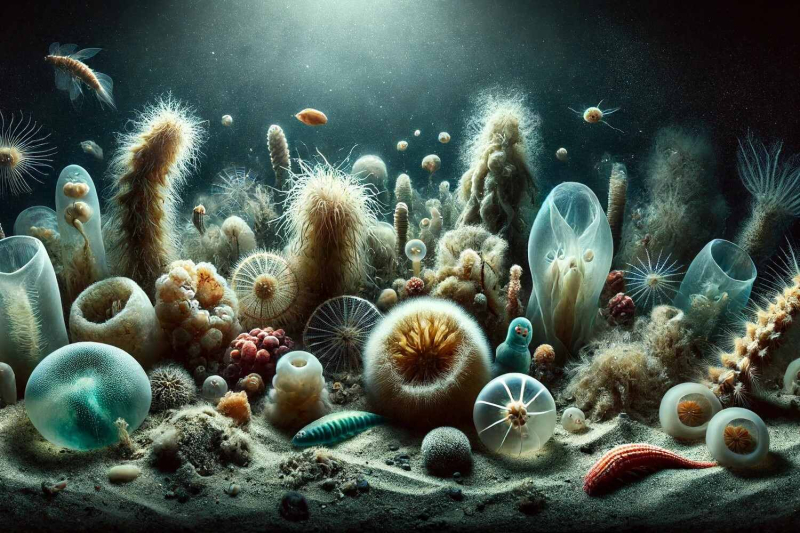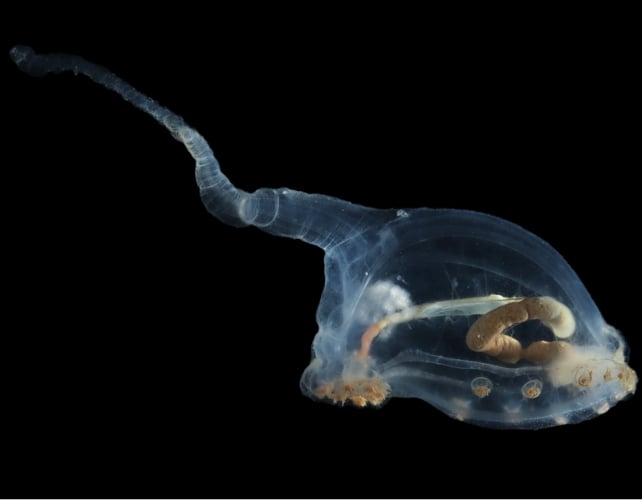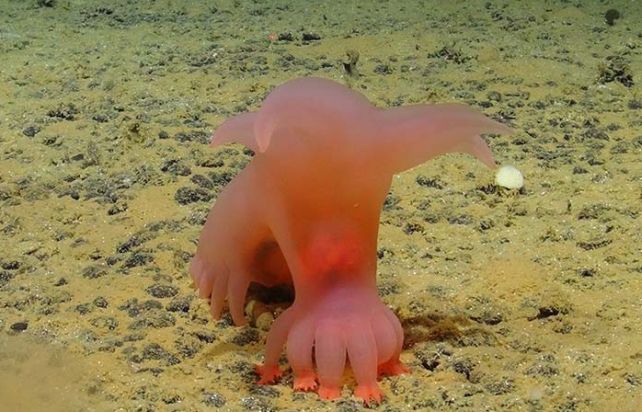
© Image generated by DALL-E AI for Presse-Citron
You don't have to go far to find alien-like creatures; the depths of our oceans conceal mysteries that still remain largely unexplored. Venturing into their abysses still remains a very complex undertaking today. Despite this, the study of the oceans is making great strides as technology advances. Recently, the Alvin submarine has been upgraded to extend its range even further. The RAD2 robot from the University of Rhode Island explores the depths in search of new species and cyborg jellyfish are also exploring the abyss.
Recently, an international team of researchers made fascinating discoveries in the Clarion-Clipperton area, located between Mexico and Hawaii. These scientists identified unknown species, surviving in more than inhospitable conditions. As you will see, their appearance is truly fascinating.
Creatures worthy of Subnautica< /h2>
The game Subnautica is known for the quality of the immersion it offers, and also for its rather incredible-looking marine fauna. The discoveries of the expedition led by the Seabed Mining And Resilience To EXperimental impact (SMARTEX) team from the UK National Oceanography Centre n& #8217;have nothing to envy him.
This large-scale underwater mission allowed a remotely operated vehicle (ROV) to be submerged in the abyssal depths of the Clarion-Clipperton zone, between 3 500 and 5 500 meters below the surface. In these places, life must brave extreme conditions: crushing pressure, total darkness and freezing temperatures. However, against all expectations, it does persist,
Among the most spectacular discoveries is a specimen of transparent sea cucumber, nicknamed “ unicumber ”, belonging to the < family em>Elpidiidae (see photo below). Thanks to the striking images captured by the ROV, we can clearly observe its digestive tract, full of sediment from the seabed. « These sea cucumbers were among the most imposing specimens observed during this expedition. They really act like vacuum cleaners, cleaning the ocean floor ,” explains Thomas Dahlgren, a marine ecologist from the University of Gothenburg.

The unicumber, so transparent that its organs can be seen. © SMARTEX/NHM/NOC
Other equally fascinating finds have also been recorded, such as aa delicate glass sponge, a crustacean with an elongated body, as well as starfish, corals and anemones. Among this strikingly diverse underwater fauna, one creature stands out with its bright Barbie pink color: the “sea pig” of the genus Amperina, proudly displaying its delicate legs and its fleshy and fluffy appearance worthy of a cartoon character.

The famous sea pig really has nothing to envy of an extraterrestrial © SMARTEX/NHM/NOC
A remarkable adaptation to a hostile and threatened environment
At these extreme depths, life relies on a very rare food resource, mainly made up of suspended organic matter, commonly called “  “marine snow”, falling from the upper strata of the ocean. Faced with this extreme scarcity of nutrient supplies, organisms have no other choice but to develop very ingenious adaptation strategies to ensure their survival. “ This food shortage forces individuals to live in a dispersed manner, but paradoxically, the richness of species present in this area remains surprisingly high ” explains Dahlgren.
The specialization of adaptations of these creatures defies belief. For example, the exceptional longevity of the glass sponge, which can reach the venerable age of 15,000 years, constitutes the absolute record for life expectancy in the animal kingdom.
However, despite this abundant biodiversity, this region also makes the & #8217;object of deep sea mining activities, a potentially devastating threat to these extremely fragile marine habitats. Scientists continue to warn of the need to deepen our knowledge of these unfathomable environments, a guarantee of their future preservation. « We must learn more about this environment in order to be able to effectively protect the species that reside there. Today, 30% of these areas are placed under protection, but is this measure really sufficient to guarantee that these species are not threatened with extinction ? » asks Dahlgren.
Today&# 8217;today, these ocean areas remain one of the last unexplored frontiers of our fold and it will still take us many decades to unravel all their mysteries. Maintaining these ecosystems means guaranteeing that these extraordinary species do not disappear before they have even been discovered and studied. Fortunately, our technologies make us more and more capable of knowing more about these hidden worlds, but they must also be made available to preserve them.
- The SMARTEX expedition sent an ROV into the abyssal depths of the Clarion-Clipperton zone.
- This little machine controlled remotely allowed the observation of creatures with an appearance worthy of extraterrestrial creatures.
- Transparent sea cucumber, 15& nbsp;000 years or a species called “sea pig”.
📍 To not miss any news from Presse-citron, follow us on Google News and WhatsApp.
[ ]

